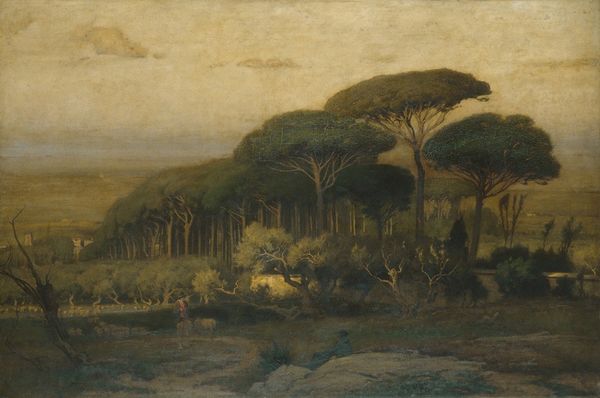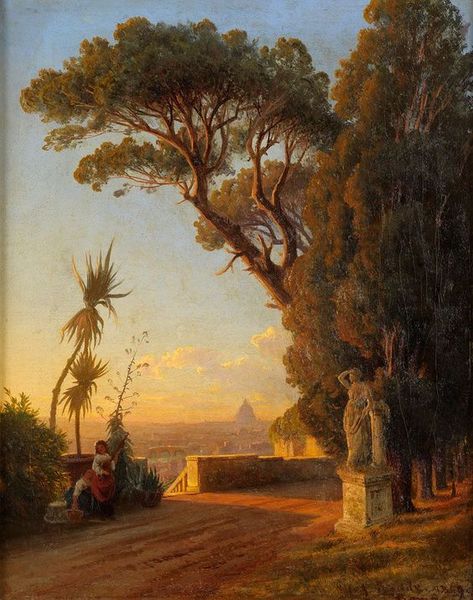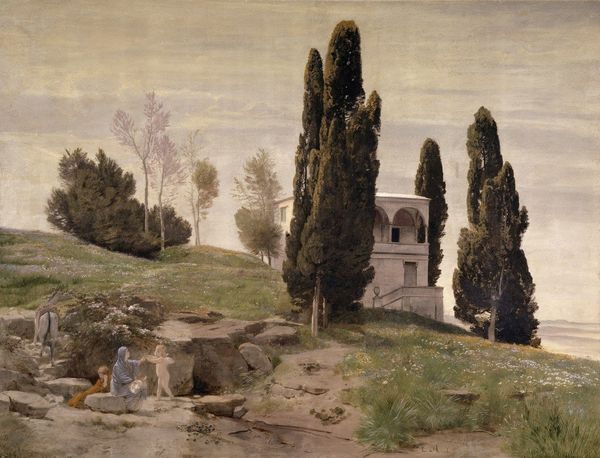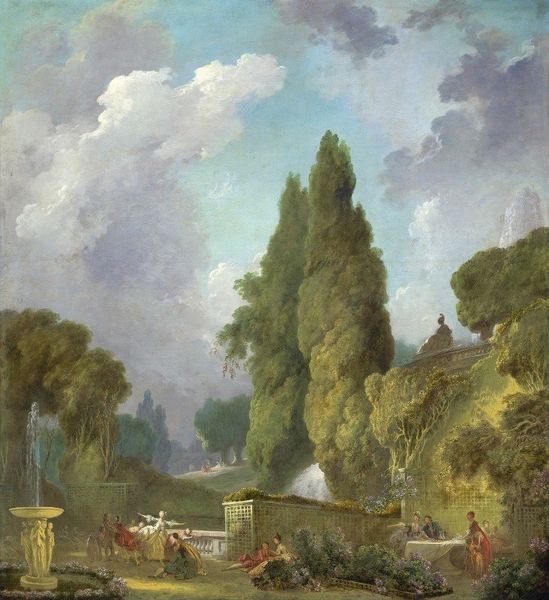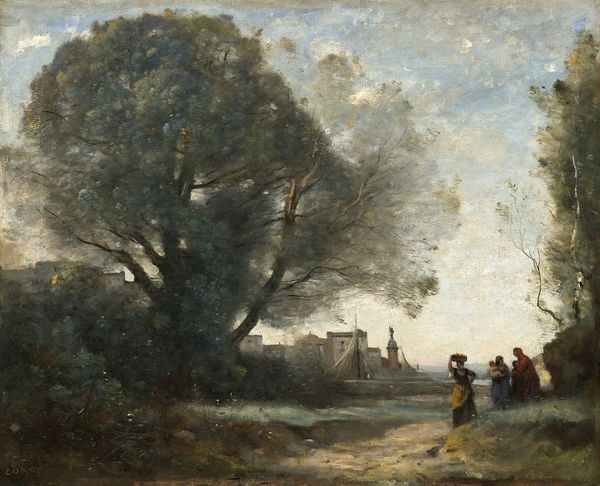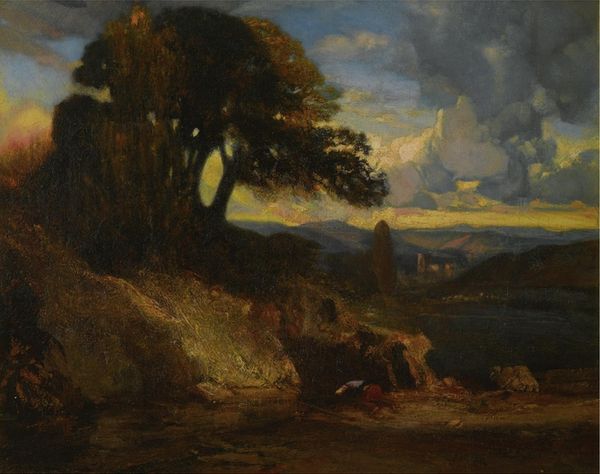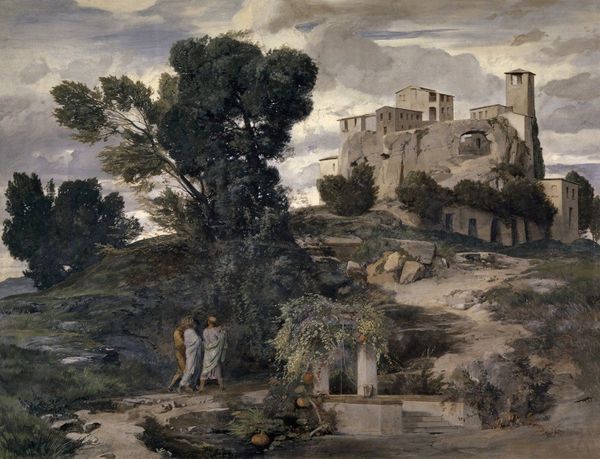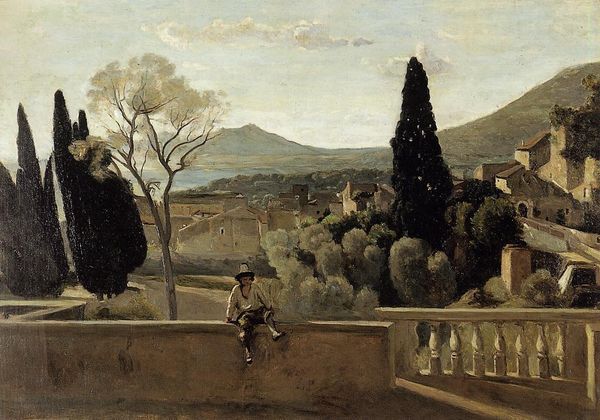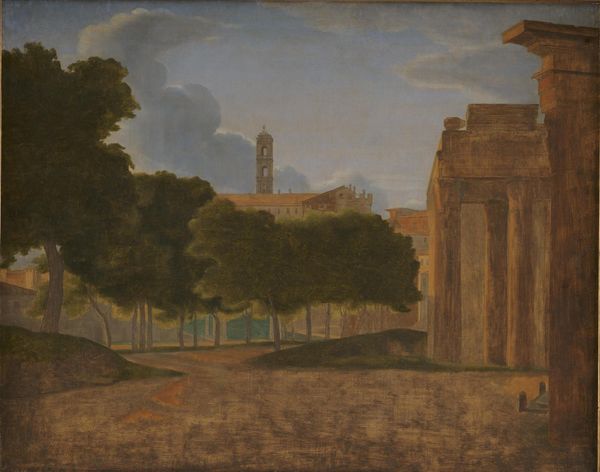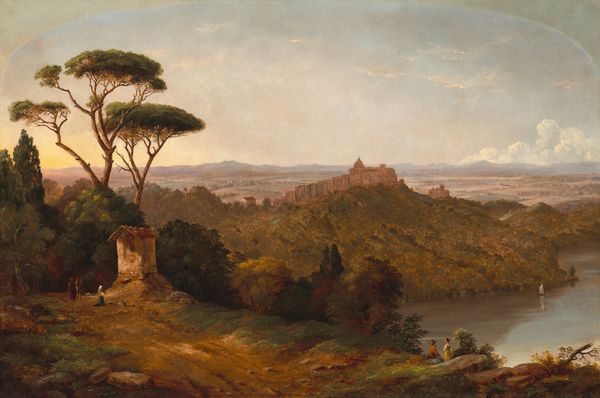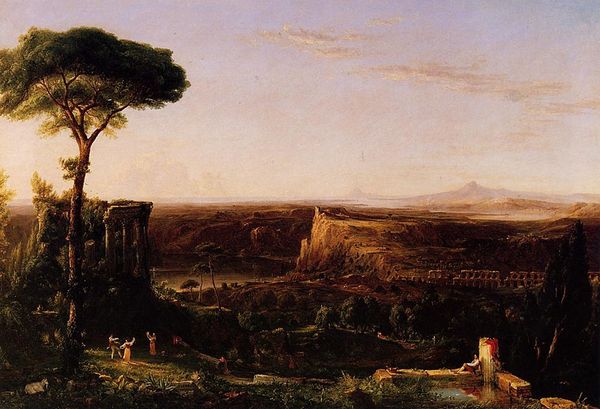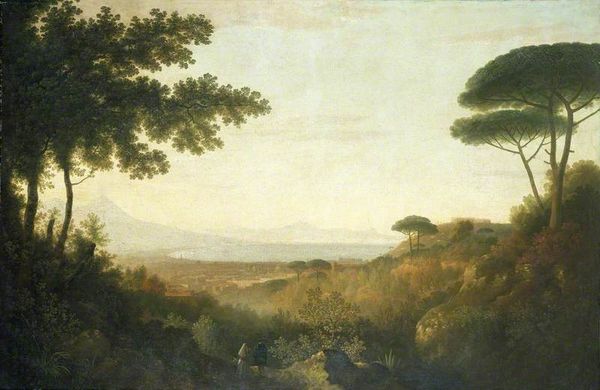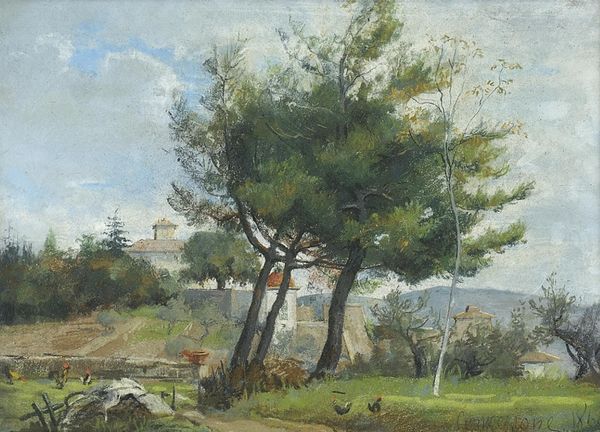
plein-air, oil-paint
#
plein-air
#
oil-paint
#
landscape
#
oil painting
#
romanticism
#
cityscape
#
genre-painting
#
italian-renaissance
Copyright: Public domain
Curator: This is Richard Parkes Bonington’s oil painting, “View on the Grounds of a Villa near Florence.” Editor: It has a dreamlike quality, almost faded. The colors are muted, and the scene feels serene but with hints of underlying social stratification. Curator: Indeed. Note the compositional balance—the architecture on either side bookends the middle ground, which leads the eye back to the distant hills. Bonington’s brushwork is loose yet precise; observe how he captures the light filtering through the trees. Editor: And who is permitted to dwell and enjoy this filtered light? The landscape implies leisure and privilege, set against the backdrop of laboring field-hands; their presence reinforces that societal dichotomy between those who work and those who do not. I'm also fascinated by the presence of the peacock; could that indicate social posing and self-display amongst this population? Curator: The peacock surely acts as more than just ornamental. If you analyze its placement—set apart, gazing outward—the peacock can stand alone as its own symbolic study. This particular form creates an asymmetry that invigorates the painting. I note also Bonington's masterful way with textures—the smooth stone of the villa walls contrasted with the feathery plumes of the peacock. It creates a sensual experience for the viewer. Editor: Sensual, yes, but also deeply implicated within the grand tour's artifice. The light seems designed for viewing and leisurely posing, inviting those visitors who can afford to gaze upon such cultivated landscapes. Curator: Regardless, Bonington gives the scene a temporal permanence through formal mastery and perspective. His use of light lends a golden warmth that suggests idealized serenity. Editor: An idealized, exclusive serenity—and the painting, as an object, reifies these historical inequities. It’s imperative to acknowledge these contexts to enrich our reading of its aesthetic qualities. Curator: Ultimately, this "View" is as formally beautiful as it is historically situated. I find this an interesting paradox to reconcile within Bonington’s painting. Editor: Absolutely. Bonington captures a perspective on landscape itself; its own sort of statement.
Comments
No comments
Be the first to comment and join the conversation on the ultimate creative platform.
